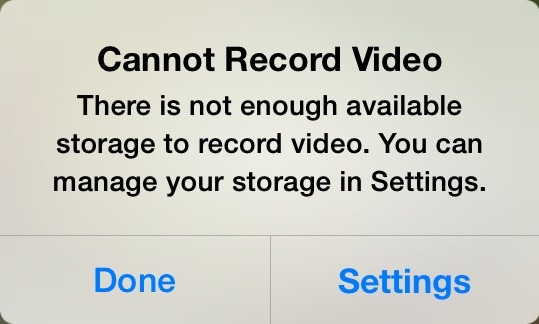After years of complaints, inspired by users unable to install iOS updates because of insufficient free space, Apple has finally eliminated the inadequate 16-gigabyte storage tier from its iPhone lineup.

Rather than keeping the entry-level 16-gigabyte iPhone SE in its lineup at a cheaper price, Apple opted to eliminate it entirely on Tuesday, doubling the smallest available size to 32 gigabytes. Despite the increase, the iPhone SE retains the same starting price of $399.
The change brings the iPhone SE in line with both the iPhone 6s and the flagship iPhone 7, all of which come in sizes no smaller than 32 gigabytes. In fact, the jet black and new (Product)Red iPhone 7 models come with a minimum of 128 gigabytes.
Non-upgradeable storage on the iPhone has long been a source of controversy for some users, who have lodged complaints that Apple was being "cheap" by offering low-capacity models.
Back in 2014, Apple was hit with a lawsuit accusing it of misrepresenting iPhone storage in its iOS 8 operating system. The complaint argued Apple used an "unexpectedly large percentage" of storage on 8- and 16-gigabyte devices, though the suit was eventually tossed out.
The push to a 32-gigabyte standard began recently but was completed quickly. Starting last September, the launch of the iPhone 7 marked the first time that a flagship handset came with no less than 32 gigabytes of storage.
Just a few years ago, the company was still selling 8-gigabyte iPhone models in select international markets. But once the company discontinued its low-end iPhone 5c, the 8-gigabyte tier went with it.
Capacities of 16-gigabytes were already eliminated in Apple's iPad lineup. Even before the iPad mini 2 was removed on Tuesday, it came with an entry-level storage size of 32 gigabytes.
The lone remaining iOS device in Apple's lineup with less than 32-gigabytes of built-in storage is the iPod touch. The portable media player, which was last updated in 2015, still comes in a 16-gigabyte budget model priced at $199.
Of course, it's still along way away from the first iPhone, released nearly 10 years ago, which was offered in a 4-gigabyte capacity. The 4-gigabyte first-generation iPhone was unceremoniously discontinued in September of 2007, just a few months after the iPhone debuted, leaving one storage option of 8 gigabytes.
